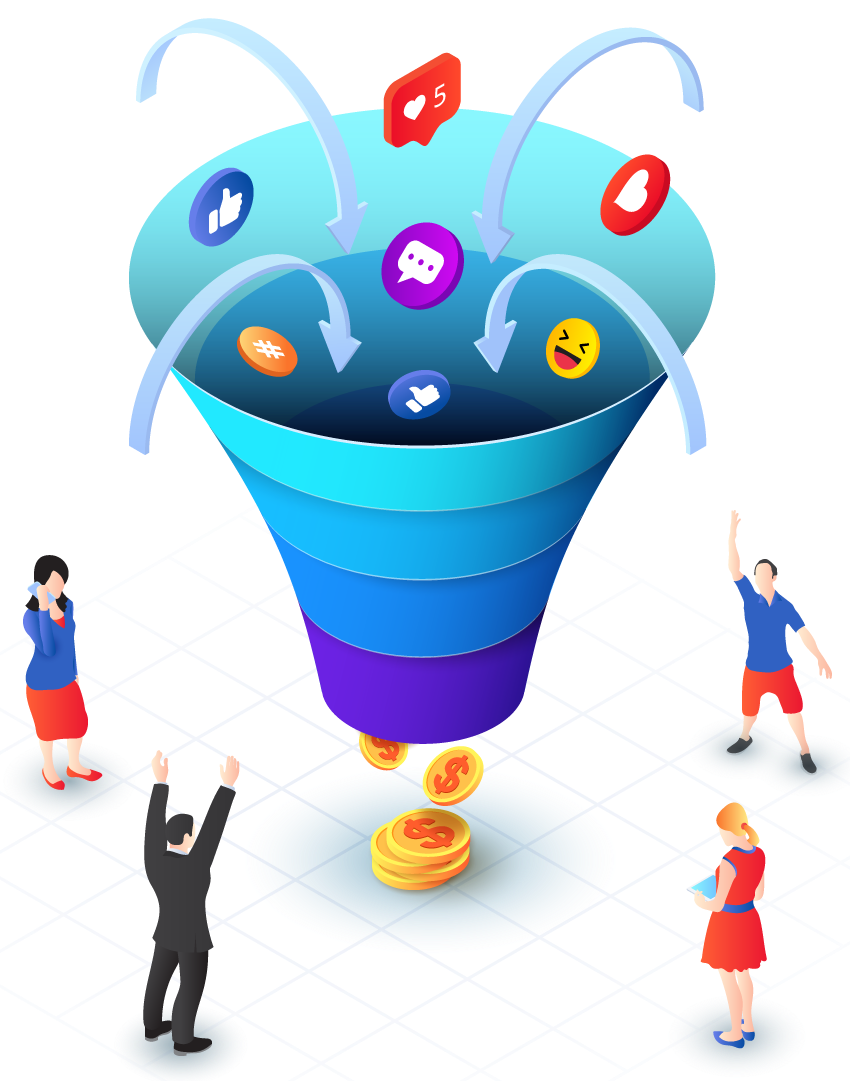How Sales Funnels Streamline Your
Marketing Efforts
From the moment a potential customer first interacts with your brand, you can begin
to nurture them through a series of stages that lead to the sale. These stages are
called a sales funnel and are used by businesses of all sizes to grow their revenue
and profit.
A sales funnel breaks down into three different parts: Awareness, Interest, and
Action. This is a process of strategically positioning your business to capture a
prospective buyer’s attention through content, advertising, cold calls, and email
campaigns, and then guiding them towards deeper engagement by providing useful
resources that are appropriate to their commitment level.
During the awareness stage, your prospective customers become aware of the need
for a solution to their problem or pain point. Your target audience is looking for a
product that addresses their needs, and this is the phase when you can use online
ads, content marketing, social media, and cold emails to drive traffic to your website
and capture their attention.
When a prospect enters the interest stage, they have demonstrated an active desire
to address their problem or pain point and are beginning to research potential
solutions. They are evaluating their options, looking at product reviews, and
considering cost.
To continue to nurture this interest and move prospects through
the sales funnel, your marketing efforts should include blog posts, videos, and
webinars that provide educational content about your products or services that is
relevant to the problem they have identified.
As a potential client begins to evaluate your product, you should offer a free trial or
an eBook in exchange for their contact information. This is a great way to gain their
trust and build brand loyalty. You can also use social media to reach out to existing
customers and offer them additional services or discounts to entice them to buy
again.
The action stage is where your prospect makes a decision to purchase your product.
This is the most important part of your sales funnel, and you can increase your
chances of converting them by providing an excellent experience. A well-planned
implementation and follow up can make all the difference in turning one-time buyers
into repeat customers.
Using a sales funnel allows you to automate some of your marketing processes to
save time and effort and free up resources for strategic initiatives that will help your
business succeed in an ever-changing competitive landscape.
By leveraging tools that support your sales team’s efforts and provide real-time data, you can optimize your funnel to boost productivity and drive consistent, sustainable growth.
For example, leveraging a CRM with automated email campaigns, lead scoring and
follow-ups that nurture prospects automatically is a simple way to free up valuable
time for your reps to focus on selling. It’s all about balancing the right tasks with the
right priorities. For most small businesses, sales are a top priority, and implementing
a sales funnel is one of the best ways to achieve this.

Free Training video
How To Transform Your Online Business with Our Universal Sales Funnel Template
My Recent Posts
All-in-One Sales Automation Platform
Check out my recent post on all-in-one sales and marketing tools and what I think of it.
Sales Funnels
Check out my recent post on sales funnels and what I think about them. Are they still worth it?

From Finance to the Digital Marketing World!
Hey there! I am Natalie Acosta a digital marketer with a mission to educate and help everyday people to unlock their business potential the power of digital tools and software. My journey into the online space was not a straigh path, but it's been one of growth, discovery and a passion for helping others succeed! After spending over a decade in the financial industry, I decided to take full control of my time, income and future - and that's when I found digital marketing. It has provided me with the freedom I was craving, the ability to make a real impact, and I am here to help you do the same!
Natalie Acosta
©Copyright 2025 Educate My List
680 E. Main Street, Suite A, Unit 1361
Stamford, CT 06901
